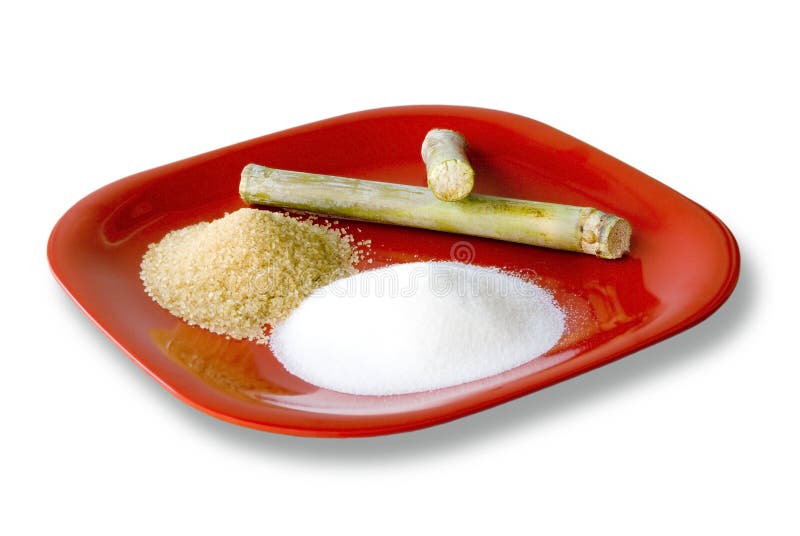The Journey of Sugarcane: From Harvest to Everyday Products
The trip of sugarcane is a multifaceted procedure that begins with thorough growing and culminates in a range of products that penetrate our daily lives. As we discover the different elements of sugarcane's journey, its duty in sustainability and the wider effects for our atmosphere come right into sharper focus.
Farming of Sugarcane
The growing of sugarcane is a crucial farming process that needs specific environmental problems and management techniques. Optimal development takes place in subtropical and exotic regions where temperatures vary between 20 ° C and 32 ° C. Adequate rainfall or watering is important, as sugarcane grows in moist soil with well-drained problems (sugarcane product). Dirt high quality dramatically influences yield; hence, farmers often carry out dirt examinations to identify nutrient needs
This method helps with efficient harvesting and takes full advantage of sunlight direct exposure. Plant rotation and intercropping are recommended practices to enhance soil fertility and reduce pest infestations.
Fertilization is another critical aspect, with phosphorus, potassium, and nitrogen being the main nutrients required for optimal development. Prompt application of these fertilizers can considerably improve sugar returns. Furthermore, keeping an eye on for illness and pests throughout the expanding period is crucial, as these elements can adversely influence plant health and performance. Generally, successful sugarcane cultivation rests on a combination of ecological stewardship, calculated planning, and recurring administration practices.
Collecting Techniques
Effective sugarcane cultivation finishes in the harvesting phase, which is pivotal for making best use of yield and making certain high quality. The timing of the harvest is crucial; sugarcane is normally harvested when sucrose levels optimal, typically in between 10 to 18 months after growing. This period differs based upon climate, soil kind, and sugarcane variety.
Gathering strategies can be broadly categorized right into manual and mechanical methods. Hands-on harvesting is labor-intensive, counting on competent employees that use machetes to cut the stalks short. This technique permits selective harvesting, where only the ripest walking sticks are picked, thereby boosting overall sugar content.
On the other hand, mechanical harvesting has actually obtained popularity due to its effectiveness and cost-effectiveness. Specialized farmers furnished with reducing blades and conveyor systems can refine large areas rapidly, substantially minimizing labor prices. Nonetheless, this approach may lead to the inclusion of immature canes and a potential reduction in sugar top quality.

No matter the approach used, making certain that collected walking sticks are delivered quickly to processing facilities is essential. Motivate taking care of lessens wasting and protects the integrity of the sugarcane, establishing the phase for ideal processing.
Handling Techniques
Processing sugarcane entails a number of vital steps that change the gathered stalks into useful items, mainly sugar and molasses. The initial phase is washing the walking cane to eliminate soil and particles, complied with by the extraction of juice with crushing or milling. This procedure usually employs hefty rollers that break the walking cane fibers to release the pleasant liquid contained within.
When the juice is extracted, it undertakes information, where contaminations such as soil fragments and bagasse are eliminated. This is often attained by adding lime and heating up the juice, allowing sedimentation. The cleared up juice is then concentrated via evaporation, where water web content is decreased, causing a thick syrup.

Ultimately, the processing of sugarcane not just generates sugar and molasses but likewise prepares for various derivatives, which will certainly be discovered in subsequent discussions.
Products Derived From Sugarcane
Sugarcane is a flexible plant that yields a broad variety of items past just sugar and molasses. Amongst the primary byproducts are ethanol and biofuels, which have actually gained importance as sustainable power resources. Ethanol, produced through the fermentation of sugarcane juice, acts as an alternate to fossil gas and is often blended with gasoline to produce cleaner-burning fuels, minimizing greenhouse gas exhausts.
In addition, sugarcane is a substantial source of bagasse, the coarse deposit remaining after juice extraction. Bagasse is utilized in various applications, including the manufacturing of paper, naturally degradable product packaging, and as a biomass fuel for energy generation. Its usage not only decreases waste but likewise improves the sustainability of sugarcane handling.
Additionally, sugarcane-derived products extend to the food industry, where it acts as an all-natural flavor representative and sweetener in various cooking applications. In the world of cosmetics, sugarcane essences are integrated into skin care products due to their all-natural exfoliating properties.
Ecological Effect and Sustainability
The cultivation and handling of sugarcane have considerable ramifications for environmental sustainability. This plant needs substantial water sources, commonly causing depletion of neighborhood water materials and affecting bordering communities. Additionally, using fertilizers and chemicals in sugarcane farming can result in dirt deterioration and river contamination, posing dangers to biodiversity.

Lasting sugarcane farming also promotes dirt wellness through crop turning and lowered tillage, improving carbon sequestration. The fostering of these techniques not only supports ecological honesty yet also enhances the durability of farming areas against climate modification.
Final Thought
In recap, the trip of sugarcane incorporates various stages from growing to handling, inevitably causing a wide array of products. The importance of sugarcane prolongs past simple sugar, adding to sustainable power with ethanol manufacturing, lasting product packaging using bagasse, and all-natural removes for cosmetics. This complex plant plays a crucial role in both dietary enrichment and environmental sustainability, highlighting its value in contemporary farming and commercial techniques.
Effective sugarcane growing culminates in the gathering phase, find out here which is read the article critical for optimizing return and making sure high quality. The timing of the harvest is important; sugarcane is normally gathered when sucrose levels peak, usually in between 10 to 18 months after planting.Processing sugarcane entails a number of critical actions that transform the harvested stalks right into useful items, mostly sugar and molasses.Sugarcane is a flexible crop that generates a vast variety of products beyond simply sugar and molasses. Furthermore, the use of plant foods and chemicals in sugarcane farming can result in soil destruction and river pollution, posing threats to biodiversity.